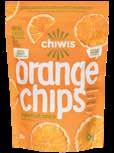
DARK CHOCOLATE




















good FOOD


Meals

























Meals

Harmonic Arts is here to talk about how to use elixirs as an easy way to add calming adaptogens to your daily ritual. Learn how these delicious herbal elixirs can bring balance in times of stress.
SPEAKER: Yarrow Willard
WHEN & WHERE:
November 4 | Langley
November 9 | Online Webinar
November 10 | White Rock
Save on everything you need for entertaining, gifting, staying active and staying in! Plus, gourmet seasonal samples, special cozy beverages and gift ideas.
WHEN: December 2 & 3
WHERE: All stores
NOW Foods knows how anxiety can disrupt sleep, impair immunity, strain relationships, hamper productivity and temper joy. Learn about different herbs and extracts that can help calm your mind and restore a sense of peace.
Christian and Jennifer from BONED Broth Company know all about superfoods. Learn how every sip of this ancient, collagen-rich drink provides head-to-toe health benefits.
SPEAKERS: Dr. Christian Brix & Dr. Jennifer Brix


WHEN: November 23
WHERE: Instagram Live
MORE EVENT DETAILS: naturesfare.com
The health and wellbeing of our customers is central to our mission. We believe that learning how to live your healthiest life should be accessible to everyone. That’s why our Wellness Talks are made available for free to everyone.
Marketing Director Stephanie Thatcher
Content Manager Chantelle Nuttley
Creative Director Janna Payne
Copy Editor Marilyn Fransen
SPEAKER: Dr. Thalia Carney
WHEN: December 7
WHERE: Online Webinar
Vancouver-based supplements brand VITALITY is talking energy. Have you been feeling drained or that you are dragging through each day? Learn about key causes of fatigue and, better yet, find simple ways to help yourself feel energized again.
SPEAKERS: Cheryl Grant
WHEN: December 14
WHERE: Instagram Live
Check out our YouTube channel to catch up.
@naturesfaremarkets
Dates
change. Check
for
naturesfare.com
©
materials in this magazine are suggestions only. Nature’s Fare Markets does not guarantee results.
Do you often find yourself struggling to focus and get items checked off your to-do list? You’re not alone. Brain fog and trouble focusing are common issues for a myriad of reasons including lack of sleep, stress, nutrient deficiencies, health issues and much more. Clear Focus helps to increase your concentration and memory so you can focus on what’s important.
Genuine Health Clear Focus

More than just a cup of tea, Traditional Medicinals takes actions today that ensure the healthy future of the planet, people and communities of tomorrow. Rooted in sustainability, social and environmental activism, and ingredient purity, Traditional Medicinals is made from quality ingredients—certified organic and medicinal-grade herbs. Slow down and enjoy a cup of tea; you are caring for yourself, the plants you are drinking, the people who forage and the planet we all live on.
Traditional Medicinals Tea



Having nourished and moisturized skin is the best way to protect against aging, collagen loss and environmental damage. Poppy extract is the powerhouse in this antioxidant-rich blend that hydrates, nourishes and encourages resilience. It is clinically proven to reduce appearance of under-eye bags and dark circles, improve over skin density, and support elasticity, luminosity and radiance. It contains 10 beneficial botanicals with antioxidant properties, including rosehip, marula oil, vitamin E and ginger extracts.

LaVigne Liminal Resilience Face Oil

Nothing quite kicks off the holiday season like home-baked goodness. Trying to satisfy all dietary needs without compromising a classic recipe can seem challenging—but it doesn’t have to be. Whether you’re needing to go gluten-free, vegan, low sugar or sneak in some nutrition, there is a swap available that even grandma would give the okay to.
The first step in creating a gluten-free goodie is understanding if the person requiring the swap is gluten-sensitive or celiac. Both needs require care for contamination with gluten ingredients, but those who are celiac require even further care. If your guest (or you) is celiac, it is important to make sure that all ingredients used are certified gluten-free, you are using non-porous cooking equipment such as glass or stainless steel that has been freshly sanitized, and from production to packaging this is the only recipe being made in the kitchen.
Gluten-free can be one of the more challenging swaps to make because the flour substitutes can leave the batter drier or looser depending on the baked item. Luckily, there are so many gluten-free baking mixes and baking ingredients on the market today that most flour substitutions can be a direct 1-to-1 swap with wheat flour listed in the recipes. Some of our favourite flour blends are from Pamela’s Baking and Bob’s Red Mill; they add tapioca starch which works to produce a consistency like that found in wheat flour. If you would like to create your own flour blend you will need rice flour, potato starch, tapioca starch and xanthan gum, and use this conversion chart on the right to get baking.
in Recipe

Just like gluten-free, there are many more plant-based options available than ever before that allow you to adjust recipes without affecting flavours.
The easiest swap is straight vegan butter; there are no conversions needed and it can be melted or creamed for whatever the recipe may call for. However, if the recipe uses melted butter, then olive, coconut or avocado oils can be used—just be mindful that some may alter the flavour.
Vegan butters tend to melt faster and not set up as firmly. So if using them in cookie doughs or icing, it is important to work quickly and allow for more cooling time during preparation.
Eggs tend to stump some bakers looking to make the swap, but if eggs are being used as a binder there are endless options to get things sticky—it just depends on what you are baking.
Choose of one of these swaps
Cupcakes & Cakes
• half medium ripe banana, mashed
• ¼ cup plain apple sauce

• ¼ cup silken tofu, blended until smooth
Cookies
• 1 flax “egg”
Bars & Brownies
• 1 flax “egg”
• half medium ripe banana, mashed
• ¼ cup apple sauce
• ¼ cup silken tofu, blended until smooth





• ¼ cup yogurt (dairy or non-dairy)





1 tbsp ground flax + 3 tbsp water
Whisk with a fork and let sit until gelled, about 5 minutes. Use in recipes in place of 1 egg.
While the options are endless (there isn’t a seed, nut or legume that hasn’t been milked) there are a few things to keep in mind when choosing a non-dairy substitute. Many options are flavoured or sweetened, so if you don’t want to adjust other ingredients in the recipe, unflavoured and unsweetened tends to be the best option. But in some recipes the addition of vanilla might work well as a flavour boost.
Whole Milk
Oat or coconut milk are the best options.
2% Milk Rice, almond or soy milks are best.
Buttermilk
Mix 1 cup non-dairy milk and 1 tbsp of apple cider or white vinegar. Sit 10–15 min.
Use unsweetened coconut or cashew cream.

Yogurt & Sour Cream
Prepared nondairy versions work well here.
Decreasing sugar intake while maintaining that decadent experience and keeping things natural isn’t as much of a challenge as you may think. These are our favourite sweet swaps.
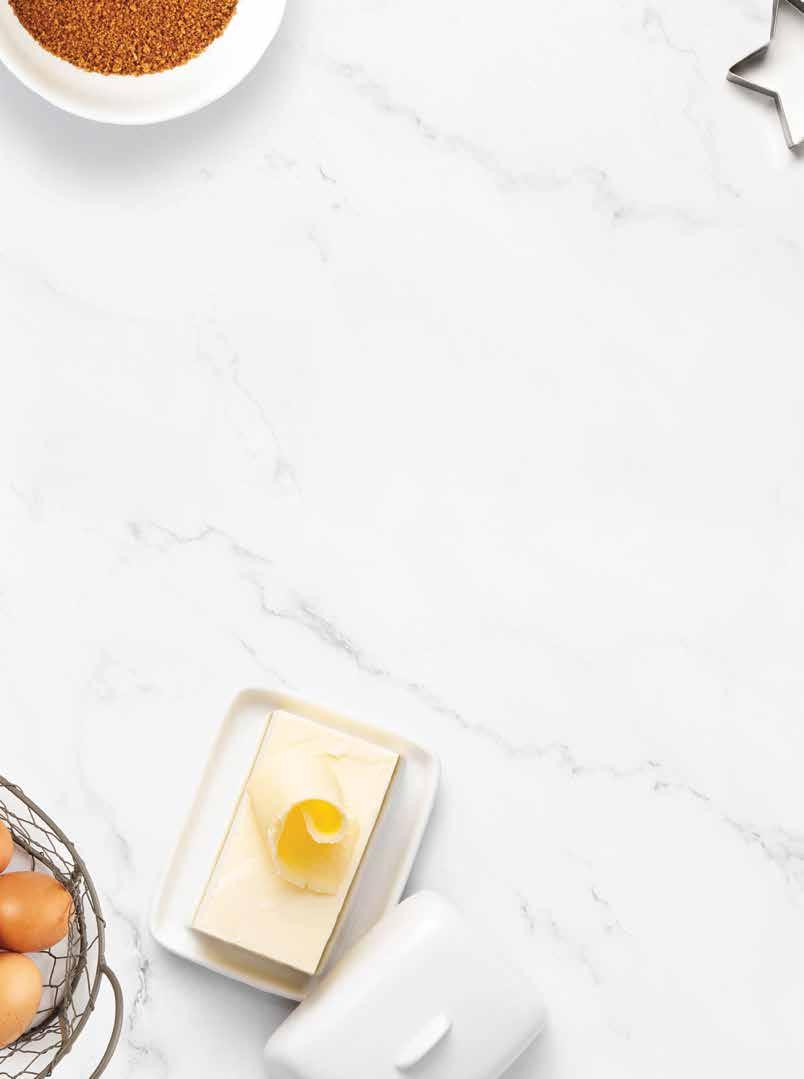
Coconut Sugar 1 cup
Monk Fruit ½ cup
Mashed Banana 1 cup Decrease liquid by 3 tbsp
Honey Available raw or pasteurized. Has a subtle flavour that can sometimes include the flavours from the flower nectar that was used to make it. Reduce baking temperature by 25°F.
Maple Syrup Has delicious flavour, is high in minerals and has a low glycemic index.
Agave Available in three different flavours (light, amber and dark) and increases in flavour and complexity the darker it gets.
Coconut Nectar
Coconut Palm Sugar
Similar to maple syrup while offering minerals and being low on the glycemic index.
Coconut Nectar 1 cup Decrease liquid by 1 tbsp
1 cup
Decrease liquid by ¼ cup
Erythritol 1 cup Do not use in yeast-based recipes
Honey ¾ cup
Decrease liquid by 2 tbsp
Maple Syrup
¾ cup
Decrease liquid by 3 tbsp. Decrease oven by 25°F
Agave Syrup ⅔ cup Decrease liquid by ¼ cup
Stevia 1 tsp May need to replace weight in recipe with applesauce or yogurt. Decrease oven by 25°F
Monk Fruit Extract (luo han guo)
Stevia
Does not have a coconut flavour and is high in minerals and amino acids with a low glycemic index. It will change the colour of your baking so best used to replace brown sugar.
200 times sweeter than sugar with high antioxidant properties.
200 times sweeter than sugar, zero calories, zero glycemic index. It’s best to use one that is blended for baking, as it will have additional ingredients to help balance the weight lost while replacing sugar.
Erythritol Heavily used in keto-friendly recipes, it looks and tastes much like sugar but with zero calories. A great choice as it does not dry out baking, but it cannot be used in recipes that call for yeast because they will not rise.

These make a great sugar replacement and increase nutrition and moisture. While apples will blend into flavours, bananas will be noticeable, so only use where the flavours will work.
When using liquids as replacements you will have to decrease the amount of other liquids your recipe calls for. Add the sweetener to the batter and then add liquid slowly, mixing until the correct consistency.






With stress at an all-time high over the last few years, it’s really easy to put food on the back burner. Plus, if you have strong feelings of depression or anxiety, making a healthy meal can feel almost impossible, even if it can make a world of difference.
 Written by Lisa Kilgour, rhn
Written by Lisa Kilgour, rhn
So, let’s start small and easy. Is there something you can make that’s fast, easy and nutritionally dense? Focusing on adding and looking at only one meal or snack at a time is key. Let’s not add more stress to your life by judging a few food choices; each nutrient-dense addition is a win!
The good news is that many foods can help support your mental wellness. Let’s first look at a few food triggers and how to find bal ance. Then, we’ll dive into some mental wellness superfoods, all while making this as easy and doable as possible.
A common result of an imbalanced diet—a blood sugar crash—can dramatically affect your mental health. Suddenly patience goes out the window and you’re quick to anger. Or, your body may react dif ferently and instead of getting fiery, you might get tired and depressed. Many don’t actually feel hungry. Your only symptom of this blood sugar crash is a mood change.
Refined flour and sugar can also lead to nutritional deficiencies that can promote more depressive feel ings. And the rush of a sugar high can trigger anxiety in many people.
Replacing refined flour and sugar with unrefined sugar (honey, maple syrup, fruit) can make a world of difference. Adding fibre, protein and healthy fat to your meals also slows the glucose entering your bloodstream and keeps your blood sugar much more balanced.
I’ve seen a pattern over and over again, including in my own life. When under stress, we usually have a tendency to feel either depressed or anxious (with some who teeter between the two). It’s believed that this wiring happens in utero, so you’re literally born this way. And I’ve noticed that those wired for de pression tend to have a lot of sugar cravings and those wired for anxiety tend to gravitate to salty food.
These cravings can change, espe cially when faced with big-time stress or chronic stress, but they’re fairly universal. Plus, they make sense physically.
When our mood is low then our serotonin is low too. The current understanding of depression is that it’s connected to low sero tonin (some experts are question ing this idea). Eating something sweet gives us a temporary boost of that feel-good neurotransmitter. So it’s not surprising that we get strong sugar cravings!
First the bad news: eating some thing super sugary feels good for a moment, but the rebound effect is lower mood and lower serotonin. The good news is that you can get a serotonin boost from whole sweet foods, like fruit, without the re bound effect.
I believe that people who are wired for depression need healthy carbs in their diet. Yes, I believe it’s a need. I’ve observed that a low carb diet can trigger low mood for some.
Being wired for anxiety can make it hard to feel relaxed and you may have been born with neuro transmitters that were set a bit too high. This may lead to low adrenal function and frequently, low blood pressure. I’ve met many people with chronic anxiety who also tend toward low blood pressure, and that’s where your salt cravings come in.
Salt (especially sea salt) is a healing food for chronic anxiety and low blood pressure. You’re literally crav ing exactly what you need! Enjoy sea salt to your taste and add a pinch to your water any time you’re feeling extra dehydrated or if your blood pressure feels low (feeling light-headed).
In my experience, people who are wired for anxiety do well on a higher protein diet. It’s not as cut and dry as it is for depression, but protein has been found to calm neurotransmitters and I’ve seen that effect in many clients. It’s something to try.

A healthy diet is all that’s needed to support your mental health. But, these extra special bonus foods give a little more help.
Wild Oily Fish (salmon) Really high in omega 3s. Cook under 350°F to retain those precious oils.

Just a few simple additions can add nutrient-dense, blood sugar balancing food to your diet and help to support your mental wellness. Focus on the power of adding so you don’t add “make a perfect dinner” to your long list of stressors. Each added whole food is a huge win! Go nutrient density!
Berries Antioxidants help to lower inflammation and repair cells damaged by oxidative stress. Polyphenols help with concentration and attention span.

Lisa Kilgour, rhn is one of Nature’s Fare Markets’ nutritionists and soughtafter speaker and educator who helps people heal from diverse and complex health issues. She has spoken at TEDxKelowna and is the author of Undieting: Freedom from the Bewildering World of Fad Diets. Book your free appointment today at naturesfare.com Learn more: lisakilgour.com

Fermented Foods (yogurt, sauerkraut) Feeds your gut bacteria, which supports your neurotransmitter production.

Whole Grains (quinoa, oats, wheat) A source of tryptophan, which is a precursor to serotonin.

Dark Leafy Greens (spinach, kale, chard) Studies show a daily serving can reduce your risk of cognitive decline as you age.

Beans Full of fibre to keep your blood sugar steady, antioxidants for cellular repair and B vitamins which help make acetylcholine for memory.

As we head into winter our need for comfort meals increases, days feel shorter and budgeting becomes even more top of mind. Enter batch made freezer meals! They save time and money, and fulfill the craving for warm and cozy comfort foods.
Just like the name says, you mix the raw ingredients of the meal into a freezer-safe bag, and on the day you wish to cook the meal, you simply dump the contents of the bag and maybe a little liquid to your slow cooker and let it do its thing.
The best thing about most slow cooker freezer meals is that there is no pre-cooking required before or after freezing. From prep to plate all you have to do is dump, cook and enjoy. One of our favour ite budget saving tips is to gather a large variety of recipes and then meal prep based on what items you can find on sale in your local flyer. Once you have a selection of meals in the freezer, you can enjoy more time doing the things you love this season while enjoying healthy meals that cost less. Try our top three recipes to get started.
• Large and medium sized resealable freezer bags (plastic or silicone)
• A black marker
• A slow cooker
• Space in the freezer
• Standard kitchen cooking utensils
1. Decide which meals you are going to prep that week or month. It’s a great idea to have a large selection of recipes and use flyer sales to help you choose which ones to make for less.
2. Assess which ingredients you have on-hand and which ones you need to shop for.
3. Create a shopping list.
4. Shop for ingredients.
5. Organize ingredients. Separate meat, vegetables, grains, cans and sauce jars on your working area.
6. Pre-label the freezer bags using a marker with the prep date and cooking instructions.
7. Prep ingredients for the meals. Cut meat, peel and chop vegetables, and open any cans.
8. Fill each freezer bag. Place veggies and canned goods at the bottom, spices in the middle and meat on the top.
9. Let out as much air as possible then press flat onto the counter to spread out the ingredients and seal each bag tightly. This saves space in the freezer.
10. Freeze!
Serves 6
1 medium yellow onion, chopped
2 large garlic cloves, minced
1 can diced tomatoes
2 cans chickpeas
1 can full-fat coconut milk
2 tbsp red curry paste
2 tbsp coconut flour
To Serve salt and pepper, to taste lime juice, to taste cilantro, chopped Prep
Place all the ingredients in a large freezer bag. Remove as much air as possible. Freeze up to three months.
Cook
1. Allow to thaw overnight in the fridge.
2. Dump the ingredients in the slow cooker, stir and cook on low for 5–6 hours.
3. Add squeeze of lime juice and season with salt and pepper, to taste.
4. Serve over rice, quinoa or with naan bread.

5. Optional: Top with chopped cilantro.

Serves 6–8
1 lb boneless skinless chicken breasts
2 cans cannellini beans, rinsed and drained
1 cup salsa verde
1 small can mild green chiles
2 tsp ground cumin
1 cup frozen corn
3–4 cups chicken or bone broth
1 tbsp corn starch
To Serve tortilla strips or crushed corn chips avocado, diced lime juice Prep
Add all ingredients other than the broth and corn starch to a large freezer bag. Remove as much air as possible.
Freeze up to three months.
Cook
1. Allow to thaw overnight in the fridge.
2. Dump contents of bag into the slow cooker. Add broth. Cook on low for 6–8 hours.
3. Remove chicken and shred using two forks. Mix cornstarch with broth in a cup to make a slurry and mix into the pot. Stir shredded chicken back into the pot and cook 15 minutes until slightly thickened.
4. Optional: Serve topped with tortilla strips or crushed corn chips, diced avocado, fresh cilantro and a squeeze of lime juice.

Serves 6–8
1 medium yellow onion, diced
3 garlic cloves, minced
4 cups canned tomato sauce
½ cup no salt-added vegetable broth
½ cup canned full-fat coconut milk
½ tsp cumin
½ tsp dried oregano
⅛ tsp red pepper flakes
1 cup dry green lentils
1 pkg frozen spinach
To Serve salt and pepper, to taste fresh basil, chopped Parmesan cheese
Prep
Place all of the ingredients in a large freezer bag. Remove as much air as possible. Freeze up to three months.
Cook
1. Allow to thaw overnight in the fridge.
2. Dump the ingredients in the slow cooker, stir and cook on low for 6–8 hours. Season with salt and pepper, to taste.
3. Serve over pasta, rice or quinoa.
4. Optional: Top with freshly chopped basil and Parmesan cheese.
Plant-based meals are a great way to increase nutrition and get creative with ingredients. This loaf transforms a few staple pantry and produce items into the perfect centrepiece alternative for your holiday meal that everyone will enjoy.
Written by Elvia Rodriguez Alonso

Loaf
1 ⅓ cups dried black or French lentils
2 bay leaves
half medium red bell pepper
1 tbsp extra-virgin olive oil
⅔ cup leek, cleaned and sliced into ¼" rings
2 ½ cups carrots, grated
¾ cup celery, chopped fine
10 sprigs fresh thyme, leaves stripped from stems
½ cup whole almonds
1 ½ tsp Himalayan salt, or to taste
3 tbsp flaxseeds, ground
¼ cup rolled oats
freshly ground black pepper, to taste
3 tbsp apple cider vinegar
3 tbsp chopped parsley
⅛ tsp chili flakes
2 tsp Dijon mustard
½ tsp ground cumin
2 cloves smoked garlic, minced (or 2 large regular cloves with a pinch of smoked salt)
Glaze
1 lb tomatoes (or 14.5 oz can diced tomatoes with juice)
1 tbsp extra-virgin olive oil
1 ½ tsp Dijon mustard
1 ½ tbsp coconut sugar
1 ½ tbsp maple syrup
1 tsp Himalayan salt, or to taste
1 tbsp apple cider vinegar pinch cayenne or chili flakes
1. Preheat broiler to medium with a rack 4" from the heat source. Line a baking sheet and 5" x 9" loaf pan with parchment paper, leaving 1 ½" extra paper on all sides of the loaf pan.
2. Cover lentils with 4 cups water and add bay leaves. Bring to a boil, reduce heat, and simmer until tender, about 20 minutes. Strain and remove bay leaves.
3. Cut pepper in half, remove seeds and stem and place cut side down on the baking sheet. Broil until skin is dark and flesh starts to soften, 10 to 15 minutes. If skin starts to burn but pepper is still not tender, move rack one level lower and broil until soft. Place in an airtight container for about 10 minutes. Peel and cut into ¼" dice. Set aside.
4. Heat oil in a frying pan over medium heat. Sauté leeks about 5 minutes. Add carrots, celery and thyme. Cook until all veggies are tender, about 10 minutes. Set aside.
5. Heat a frying pan over medium heat. Add almonds and stir until toasted, 5 to 7 minutes. Add a pinch of salt and grind fine in a food grinder.
6. Place all loaf ingredients in a food processor and pulse until mixture holds together but is not mushy, using a spatula to scrape the sides between pulses. Add a few spoonfuls of lentil broth or water if too dry.
7. Reset oven to 375°F. Fill the loaf pan evenly with the lentil mixture, and press the top down lightly. Cover
tightly with aluminum foil, and bake for 20 minutes. Remove foil and continue baking until top and edges are firm, about 25 minutes.
8. Meanwhile, make the tomato glaze. Boil about 4 cups of water. Cut a shallow X on the bottom of each tomato and place in a heatproof bowl. Pour boiling water over tomatoes, covering them completely. Wait 5 minutes, then strain and peel. Cut into 1" dice.
9. In a small-medium pot over high heat, bring tomatoes to a boil.
Reduce heat and simmer until thick, about 30 minutes. Add remaining glaze ingredients and continue simmering until thick, about 30 minutes. Mash with a potato masher. Taste and adjust seasoning if needed.

10. Smooth the glaze over the cooked lentil loaf. Bake another 15 minutes, uncovered, or until a knife inserted into the middle of the loaf comes out dry. Let rest 20 minutes then lift from pan and remove paper. Slice and serve.


This Roasted Cauliflower Salad with Maple Tahini Dressing is packed with all the good stuff: roasted chickpeas, cauliflower, toasted pumpkin seeds and fresh greens. You’ll have a hard time not eating the maple tahini dressing by the spoonful as it is garlicky, smooth and super creamy. This is a lovely salad to enjoy for lunch or as a yummy side dish for dinner.

Serves 4 | 1 hour 10 minutes
Dressing
1 tbsp miso paste
2 tbsp water
¼ cup tahini
2 tbsp lemon juice
3 tsp maple syrup
1 large garlic clove (finely chopped)
Salad
15 oz can chickpeas
1 head of cauliflower
2–4 tsp oil of choice salt and pepper greens of choice
¼ cup green onion half cucumber
¼ cup toasted pumpkin seeds
1. Preheat oven to 375°F and line two baking sheets with parchment paper.
2. Rinse and chop the cauliflower into small florets and place in a bowl. Add 2 tsp of oil and toss. Sprinkle with salt and pepper and transfer to a baking sheet.
3. Rinse and dry the chickpeas then add to a bowl and toss with 1–2 tsp of oil. Sprinkle with salt and pepper and transfer to the other baking sheet.
4. Place both baking sheets in the oven. Roast the chickpeas for 30–40 minutes until crispy. Roast the cauliflower for 40–50 minutes until soft and slightly golden. Note: You can roast both on the same baking sheet, but it may be easier to keep them separate because of the different cooking times.
5. While the chickpeas and cauliflower are roasting, prepare the dressing. Add all the dressing ingredients to a food processor and process until smooth. Optionally, whisk the dressing by hand.
6. Add pumpkin seeds to a small saucepan over medium-low heat, tossing occasionally until toasted, about 6 minutes.
7. Thinly slice the green onions. Use a vegetable peeler to shave the cucumber into long ribbons. Add a few large handfuls of greens to a large bowl along with the cucumber and green onions.
8. Let the chickpeas and cauliflower cool slightly and then add them along with the pumpkin seeds to the greens. Toss with the dressing.
Robin is the creator of the blog Greens, Eggs and Yams. Her passion is creating vegan and gluten-free foods that don’t compromise on taste. She loves being in the kitchen, creating recipes that everybody can enjoy!
IG: @greenseggsandyams

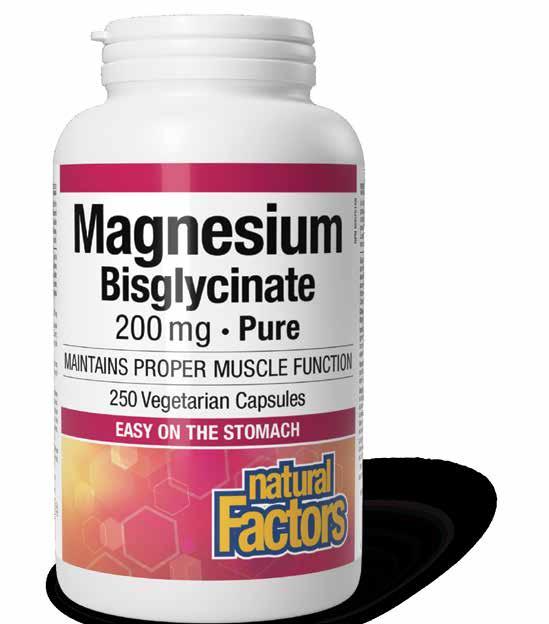
Bisglycinate is the most absorbable form available

Whether you’re a beginner questioning “What is a plantbased diet?” or if you’ve been thinking about making the switch for a long time, we wanna to help make your plantbased lifestyle as easy-peasy as possible.
Eating plant-based is the single biggest thing you can do to protect our planet. Like, just switching one glass of cow’s milk to Earth’s Own Oat could save 42,220 litres of water and 164 kg of greenhouse gas emissions each and every year. And that’s just swapping out one simple thing!
So, whatcha waiting for? Check out our top six tips on goin’ plant-based for beginners.

Start Slow Change can be tough stuff! But you know what will make it a whole heck of a lot easier? Taking it one small step at a time. Like switching one meal a day over to 100% plantbased or changing one food staple at a time. If you make it sustainable and maintainable, you’ll have heaps more success at living that plantbased life long-term.
It’s no secret that knowing why something is important to you will help you stay committed. But don’t just think ‘em! Take the time n’ sit down to write out all the reasons why switching to a plant-based diet feels right for you.
If you need inspo, we’re all about the environmental impact. Like, did ya know that only 4% of Canadians know that eating a plant-based diet is the single biggest thing you can do to fight climate change and protect the planet?

Doing it with a friend or a member of your family will make it hella easier to stick to. But if you’re the plant-based pioneer in your com munity, building yourself a digital squad is the next best thing!
There are heaps of plant-based diet benefits. Learning about the nutri tional value of plants and under standing what’s up with the food you’re eatin’ is powerful! Knowing the ways plants can help, and be correctly absorbed by yo’ body, will do wonders for your plant-based commitment (and energy levels!).
If you’re new to this plant-based lifestyle, most of your go-to recipes probably center around animal products. Investing in a plantbased cookbook and taking the time to learn new recipes will help make the transition seamless (and yummy as heck).
Knowing where to go when you’re treating yo’self to a night out will take a whole lotta stress out of choosing where to go. Google your fav places to eat and check out their plant-based options. Or make a hit list of rad plant-based joints you ha ven’t been to yet and make it a goal to eat at all of ’em. Have some delish fun with it!
essential in immune function and priming, bone health and mineral metabolism, and mood and brain health.
In the sunshine from May to October there is poten tial for us to make vitamin D. Because our country covers much latitude, the months of produc tion vary depending on where you are. The best way to check for produc tion potential: when your shadow is shorter than you are, the sun’s rays are coming at the correct angle. Production also de pends on the time of day, the darkness of your skin and the length of time in the sun. Peak rays (10 am to 2 pm), for 20 minutes (for fair skin) to 2 hours (for very dark skin) without sunscreen help max out your daily dose.
We are privileged to live in a four-season province and enjoy the spring flowers, summer heat, autumn colours and winter snow. But that also means that every year, there’s potential for the winter blues, seasonal affective disorder or general blahs to creep up on us, any time from October to April. For some, this might mean feeling unmotivated and unsocial; others might feel full-on depres sion. The change in our mood doesn’t happen overnight, and sometimes we don’t realize we were feeling blue until we come out of our fog in the spring. But what if there were some proactive steps you could take to keep those curtains open in your brain? Let’s be proactive this year!
Due to BC’s latitude on the globe, there are only a few months in the summer where the sun’s UVB rays hit our skin in such a way that we can produce vitamin D. Our body makes vitamin D (more accurately a hor mone) from the UVB rays hitting a form of cholesterol in our skin. This hormone then travels through our body, being converted into forms
In theory, we can produce and store enough vitamin D for a few months, potentially lasting through the winter. But most of us won’t have enough sun exposure, and we might use more vitamin D than the next person. Because vitamin D plays such an important role in our mood and nervous system, a defi ciency over the winter can contrib ute to our deteriorating mood.
If we’ve already missed our summer vitamin D producing months this year, what can we do?

• Traditionally, cultures in polar latitudes would supplement with vitamin D-rich foods like liver and fish liver oils. Fish, grass-fed butter, egg yolks and mushrooms also contain forms of vitamin D. In current times we can purposefully eat these foods regularly, and/or supplement with cod liver oil.
• Supplementing with vitamin D3 is a great way to top up our production. How much isn’t a straightforward answer—our ideal amount is dictated by our serum levels of 25(OH)D. A blood test can tell us, but it’s an out-of-pocket expense in BC, costing about $65. If you don’t know your levels, a place to start for adults is 1,000 to 2,000 IU in the sunny months, and 3,000 to 4,000 IU in the darker winter. Take it with a meal that contains fat for optimal absorption.
• How about a tropical vacation? A luxury for sure, but there are therapeutic properties of going south, particularly if seasonal blues impede enjoyment of your days. Going south puts the sun back up in the sky, allowing vitamin D to top up mood-producing hormones.

Sunshine provides more positive mood benefits than just vitamin D production. The light entering our pineal gland does wonders for setting our diurnal day cycle, ensuring it knows when to support our daytime energy and when to signal our evening wind-down hormones. If we’re in a dark and cloudy environment our whole day, it’s bound to get confused.
To pre-empt a sad winter, it can also be helpful to have fun activities to look forward to. Book a recurring date with friends, join a book club, or find a weekly exer cise, yoga or painting class. Have fun, social and “me” time scheduled, and treat it with the importance of a doctor’s appointment. Consider embracing the season by creating comfort with the Danish art of hygge. Think candles, cozy blankets, fuzzy slippers, a reading nook and anything that brings you joy. Twinkle lights aren’t just for the holidays!
These are all tips for being proactive this potentially low-mood season. Planning ahead this year means you don’t have to feel quite so blah!


Angela Wright, cnp is one of the nutritionists at Nature’s Fare Markets. As an instructor at the Institute of Holistic Nutrition, Ange enjoys teaching individuals or students how to read, correct and action on their symptoms.

Learn more: alignnutrition.com
Get up at the same time in the morning, and go to bed at the same time at night. Preferably get to sleep before 10 or 11 pm, to maximize melatonin production (a very strong antioxidant and relaxation hormone we make in the dark).
This can be a struggle in many places in the winter, particularly if it’s dark when you go to work and again when you go home. It’s important to see natural light when you can. When you get up in the morning, open all your curtains and eat breakfast in front of the window. Take a walk outside during your lunch break. Get outside every day.

Get above the cloud cover. Try downhill or Nordic skiing, snowboarding, snowshoeing or snowmobiling, or strap on some spikes to go for a hike in the hills or mountains. Go to a local ski hill village for a tea and stroll.
These lights give us some of the brightness and rays of the sun from the comfort of our homes, and help to stimulate production of our feel-good hormone serotonin. Sit close for 30–60 minutes while you eat breakfast, read the news or start your workday.
Would you like to talk with Angela or one of our other nutritionists about your health questions?
Scan to book or visit naturesfare.com

Beautiful winter decor made from paper bags? Heck yes! This might be the simplest and quickest DIY decor project ever, but it turns out every time and has huge wow factor. Better yet, these paper bag snowflakes cost very little to make and can be reused year after year and then composted when done.

Cutting these is similar to making 2-D snowflakes, but the finshed product is much more dramatic.

• 8–12 same-size paper bags
• glue stick
• pencil
• sharp scissors
• twine
Optional • hole punch
• paper clips or small binder clip
• watercolour paint and paintbrush
For a more colourful option, brush on some watercolour paint—just be sure to go easy on the water as the thin paper can get soggy easily.
1. GLUE Place a paper bag on your work surface with the flap facing up and the opening at the top.


Apply glue to the entire side of the bag that is facing up.
Immediately take a second bag and orient it the same way. Carefully place it on top of the first, lining up all four sides. Press and smooth the bag down. Repeat with the remainder of the bags. Note: You’ll need about 12 smaller lunch-size bags or about 8 larger grocery-size bags.
2. CUT Draw your design with pencil first or just go straight to cutting.
First, cut the open end of the bags. Snip off the top corners to create a triangle shape as shown or try a rounded shape, a single angled line, a zig-zag, or anything else that comes to mind.

Second, cut along the sides of the bags. Try semi-circles as shown or triangles and lines in different sizes and formations. Just be sure not to cut out too much and also keep the bottom flap part mostly intact.
3. FAN & SECURE Fan out the bags into a circle. If you love how it looks, you’re ready to secure it. To make any adjustments, fold it back up and adjust your cuts or add more.
Secure your snowflake open with clips or glue. (Clips work well if you’d like to keep your snowflakes and store folded flat after use.) Use a sharp pencil tip or hole punch to create a small hole in one of the snowflake’s points. Thread a piece of twine through, knot and hang.

Make a bunch and hang along a wall, in front of a window, from a mantle, or even from the ceiling.
Jen Kossowan is a kindergarten and grade one teacher and mama of two gorgeous kiddos. She’s passionate about play, loves a good DIY project, and can most often be found in her kitchen whipping up recipes that taste delicious while meeting her crunchy mama criteria. She started Mama.Papa.Bubba. on a whim in 2010 while living in the Middle East and has been sharing her recipes and activities there ever since.
Learn more: mamapapabubba.com | IG: @mamapapabubba

Cold and flu season is upon us, and even with the best preventions in place, your little one is bound to catch a bug. If your child is six or under, traditional medicine isn’t always the best option for them and finding relief for their symptoms can be a challenge. Luckily there are many natural solutions that offer safe and proven treatment to help prevent and treat those nasty germs.
At any age, prevention plays a big role in our overall wellness and ability to fight off illness, and children are no different.
Water breaks are just as important during the winter months as they are in the summer. Keeping kids hydrated helps with the elimination of toxins and waste.
How much should kids drink each day?
Ages 1–3 4 cups
Ages 4–8 5 cups
Ages 8+ 7–8 cups
Sugar directly impacts our immune system by triggering an inflam mation response in the body that weakens our immune defences.
Sunshine and fresh air do won ders for wellness. Get out there and enjoy the outdoors as much as possible.
Sleep plays a major role in sup porting a healthy immune system. Maintaining bedtime routines and getting adequate sleep is important.
While the gut biome in children is still developing, it is important to support it with whole foods that are fibre-rich and low in sugar. Also in clude fermented foods like kefir and yogurt, and try supplementing with an age-appropriate probiotic or a product like organic gut superfoods+ for kids by Genuine Health

Supporting healthy diets with key nutritional supplements is a great way to stay healthy.
• Vitamin D3
• Probiotic
• Omega-3
• Elderberry syrup
• Multivitamin (when age-appropriate)
Sometimes they still get sick despite your best efforts. Help them heal with natural remedies.
Homeopathic remedies are your best option for young children; they are safe, effective and able to be used by infants and toddlers.
• Coryzalia by Boiron for nasal congestion, runny nose and sneezing
• Day and night syrups from Homeocan for cough, cold and flu-like symptoms including fever
• Stodal by Boiron for dry and wet coughs
• Elderberry syrup is proven to reduce the duration of the symptom.
Humidifiers, nasal suctions (AKA “snot suckers”) and menthol chest rubs are also highly recommended.
Apply oil of oregano and menthol chest rubs to the soles of their feet and cover with socks to help ease a cough.

Add Epsom salts and lavender to their bath to aid in relaxation.

Sometimes a good sleep is hard to achieve. First try adjusting their environment by limited electronic devices and dimming lights an hour before bed, keeping their room cool and dark and introducing music or white noise. Second, add some additional support.
• Natural Calm for Kids is a magnesium powder that helps relaxation and sleep.
• Quietude by Boiron is great for mild sleeping disorders (nightmares, night terrors, occasional sleeplessness), irritability and restlessness associated with nervousness.
• Chamomile tea at bedtime helps with relaxation.

• Melatonin can be used on children over the age of three at a low dose of 1 mg.
• Lavender oil can be added to a child-safe diffuser.
Stomach aches and upset bellies in toddlers can be common and caused by many things, and it can be hard to deter mine what it is unless there are obvious signs such as constipation or vomiting.
• Try applying a warm compress to the belly along with a gentle abdominal massage in a clockwise direction.
• Sip warm fluids like chamomile, peppermint or ginger tea.
• Keep them hydrated and incorporate electrolytes if needed.
• Sip on warm fluids like bone broth to keep nutrition up.
• If your child is eating solid foods try adding prunes, chia seeds, and fibre-rich fruits and veggies.
• For occasional constipation relief, foodgrade aloe vera gel can help induce a bowel movement.
• Supplement with an age-appropriate probiotic.
You know your child best and extra TLC can go a long way in helping them feel better. Natural remedies can work won ders but if symptoms persist or change, it is always recommended to seek advice from your family medical profes sional and use caution when introdu cing new products to children.
Make chamomile, peppermint or ginger tea to relieve an upset tummy.
There are many factors that play a role in the health of our skin: genetics, diet, hydration, environmental influences and even sensitivities. We have said it before and we are about to say it again: the skin is our largest organ—it needs just as much attention and care as our internal wellness does, and one of the best ways to do that is to keep it well-hydrated.
Normally when we think about hydration we think about lotions, and they are a great place to start, but we are here to chat about face oils. So, what’s the difference? And how do you use them? Now before you say “I have oily skin” or “I am too young for these” and stop reading, know that oily skin may actually be dehydrated skin and prevention is where it’s at for skin care, so starting sooner than later is your best bet. Got your attention? Let’s get into it.
Lotions, creams and oils all have the common main goal of adding moisture and softening the skin. Creams and lotions hydrate and act as a delivery system for nutrients to the skin cells, and depending on the ingredients, may plump and repair the skin. Facial oils add a deeper level of hydration by both boosting and piggy-backing on the benefits of the moisturizer. Facial oils allow for deeper penetration into the skin layers as well as sealing in moisture and providing a protective barrier
to the elements, which is perfect during these colder months.
One myth is that facial oils should be avoided by those prone to oily skin, when in fact they can actually help correct it. The plant-based oils used in facial oils are made up of smaller molecules that are similar to the natural oil or sebum that is produced by the body. This allows the oil to be quickly absorbed into the skin without leaving an oily feeling.

Those with an oily skin type often have dehydrated skin. The skin overproduces oil in an attempt to compensate for thedryness. By adding a facial oil to your routine, the skin is better nourished, al lowing it to stop producing excess oil. In the end, your skin is left balanced, hydrated and no longer considered oily.
A facial oil is intended to add overall nourishment to the skin while boosting the effectiveness of your daily moisturizer, while a serum is used for a specific purpose like wrin kles, dark circles, dark patches or redness. While not everyone needs a serum, the majority of people over 30 or those prone to drier skin could benefit from adding a facial oil to their skincare routine.
Thankfully, many facial oils also contain botanicals to take it one step further and provide functions like antioxidants to heal skin from sun damage, vitamin C to help pro mote collagen production and heal skin, rose and poppy extracts to tone and reduce redness along with other plant-based nutrition to fully feed your skin.
Knowing how to apply your prod ucts is going to help them be more beneficial; with any change made, consistency in your routine in key. When thinking about application layers, think of the most potent products going on first and the polish at the end. Facial oil is applied at the end of the cleaning routine, because oil can penetrate the mois turizer and seal in the benefits, but a moisturizer is not able to penetrate an oil and would cause it to not be as beneficial to the skin as it would not be directly applied to it.
When choosing skin care, it can feel overwhelming to find products that are best suited for you. We encour age you come in, chat, sample and try something new.
Apply face oil to further treat the skin and seal in moisture. Using a quartz facial roller or gua sha tool is a nice way to complete your routine and apply the oil.
Cleanse the skin morning and night, paying attention to removing makeup if you are wearing any.
Apply a toner to help your skin return to its natural pH balance.
A pply your serums as indicated on the packaging to address any specific skin concerns.
Use a moisturizer to lock in the benefits of the serums and support the skin’s moisture barrier.
If your 10-years-younger self was doing a grocery shop in 2022, what do you think would strike you most? Probably, the sheer selection. Today, store shelves have more options than ever before. What’s more, the options aren’t just greener and cleaner and healthier, they’re also even tastier or more effective, depending on the aisle you’re in. As this year’s product trends indicated, many of us are only too happy to have so many evolved choices we love.

Magnesium is an essential mineral that plays an important part in sleep, muscle use and chronic pain. In times of stress, sleep tends to suffer and most of us just don’t get enough magnesium in the foods we eat—so it’s no surprise to see this calming sleep aid dominating in 2022. Magnesium Bis-glycinate absorbs and is tolerated especially well, plus you can get it in capules or powder.
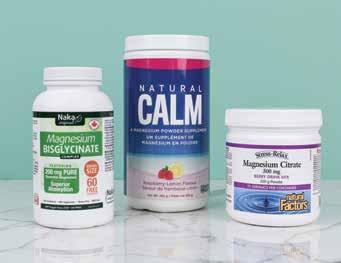
On the quest to age well with happy joints and brighter skin, collagen kind of stole the show this year. Collagen is the building block for all connective tissues: skin, hair, nails, ligaments, cartilage and muscles. It relieves joint pain and stiffness, and it gives the skin and hair a healthy radiance. Get it in a variety of forms, including great-tasting, plantbased powders.

Sophisticated drinks that are as carefully crafted as their boozy cousins will have you rethinking drinking.
Gin and tonic mocktails. Craft pale ales at 0.5%. Alcohol-free apple ciders. There’s so much more to choose from on the non-alcoholic drink shelf these days and they taste just like the real thing. As the craft beer movement has evolved, so has demand for 0.5% beer with sophisticated flavour profiles. This is good news for brain health, mental health and the old bank account. Expect to see more people embrace no or low alcohol options at holiday parties and well into 2023.
Snack food brands are catching on to demand for snacks that are clean, low-cal and free of artificial sweeteners. With natural sweeteners such as honey, grapes and cane sugar, those with a sweet tooth can get their fix guilt-free. Brands like SmartSweets and Healthy Hippo are even bringing back some nostalgic candy faves (think cola gummies) with a new, healthy twist.
There are so many plant-based and meat options now which mean you’ll never get, well, bored! Some team favourites come from Rad Jamz, Salt Spring Kitchen Co., BC Brine and Two Rivers.
All things boards are trending both in stores and on social media. From classic charcuterie to vegan alternatives and even the introduction of the butter board, a host of delicious additions are now available. Boldly flavoured jams, spreads, pickled and fermented offerings have become a staple for board building.
Oat milk and oat milk-based products are a hit among those looking for a dairy alternative. Oat has less allergy risk and often a creamy texture that’s great for baking and coffee. Watch as oats pop up in butter and yogurt alternatives.



More and more people are being intentional about reducing their intake of meat and dairy. At one time, that would have meant going without a lot of popular staples in dinner dishes and sandwiches. However, you can easily find a range of innovative and delicious alternatives that would be stiff competition against their meat and dairy counterparts.
The ever-popular ketogenic diet is always popular among those looking to lose weight, and with the expansion of keto-friendly products, it’s easier than ever to live this lifestyle. Keto-friendly options await in almost every category, from snacks to condiments.



Your skin really is your largest organ, and in the shift away from toxins, people are discovering how effective plantbased face oils can be. They nourish at a deeper level, seal in moisture and help create that coveted ‘glow’. Formulas with hyaluronic acid and vitamin C were especially popular choices in helping to repair, replenish and protect the skin.

People are so much more aware of the health risks associated with many traditional deodorants and natural deodorants have come a long way in their effectiveness, making this an easier switch. Plus, natural deodorants now come in an array of earth-friendly forms, including reusable glass jars.
Shampoo and conditioner bars were the “it” product this year in personal care. People are beyond ready to ditch the packaging, but hair care is an area most aren’t willing to compromise. Fortunately, many shampoo bar makers have teamed up with hair industry professionals to create shampoos that work as well as highend products, sans plastic.
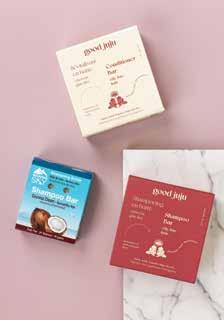 SMELL GOOD
SMELL GOOD
It’s downright exciting to find a natural dedodorant that works. We’ve curated a selction of beautifully blended products that dare we say work better than their conventional counterparts.

The newest offering in our very own Nature’s Finest line of products is thick sliced bacon. Delicious flavour, clean ingredients, and raised right here in BC. Perfect for weekend brunch and adding something extra to holiday sides.

Our featured pick for this season has just the right amount of pucker power blended with some immune system must-haves like ginger, fresh oranges and Genuine Health Fermented Organic Vegan Protein. Available only until the end of December.


Made from ancient purple grains this popcorn is lighter, fluffier and tastier. Plus, it is non-GMO, high in antioxidants and 25% of profits go to support kids in low-income communities. It’s our new favourite feel-good, taste-good and do-good snack.

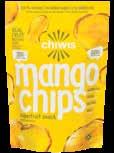

We are loving the simplicity of these perfectly dehydrated fruit chips. Chewy, sweet, single ingredient snacks that are great to have on-hand for when those sweet tooth cravings kick in. Available in kiwi, pineapple, orange and mango.
